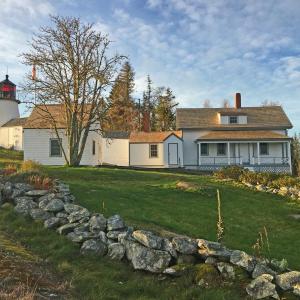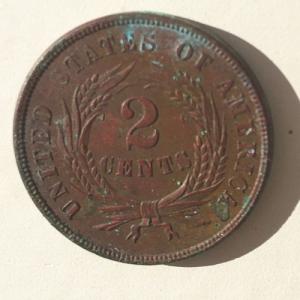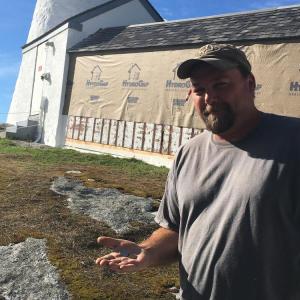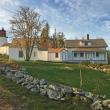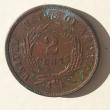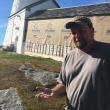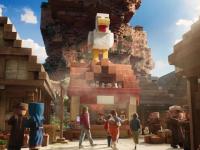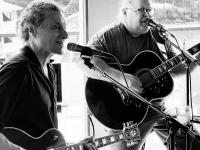The Burnt Island Light shines again!
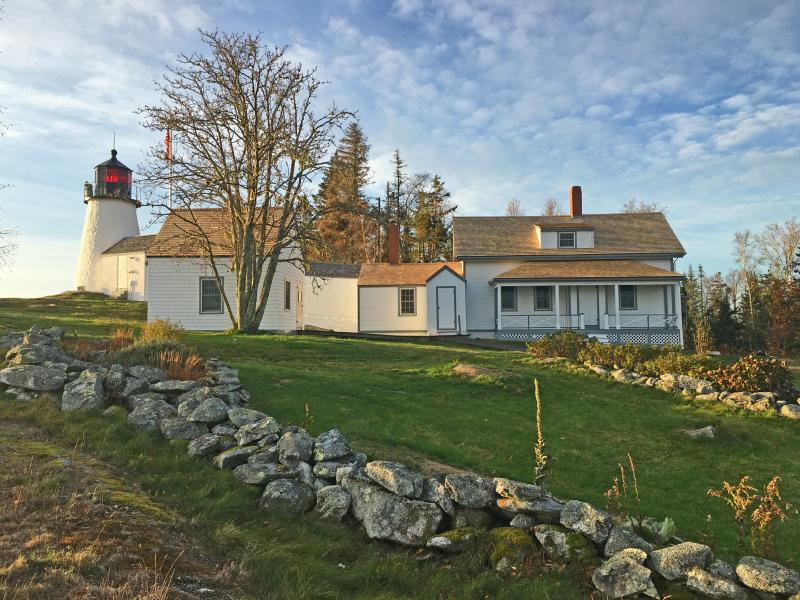 The restored Burnt Island Lighthouse and Keeper’s Dwelling. Elaine Jones photo
The restored Burnt Island Lighthouse and Keeper’s Dwelling. Elaine Jones photo
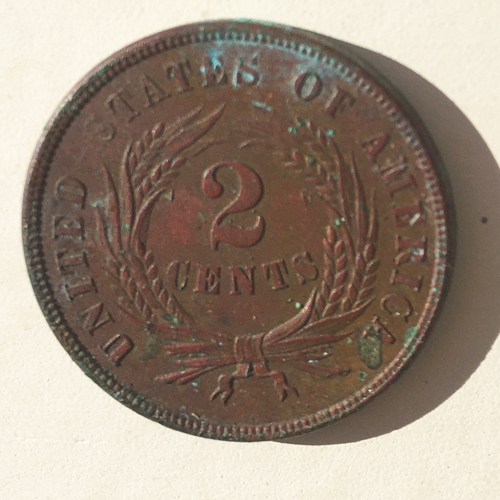 The 1868 two-cent coin that fell to the ground when lead carpenter Marc Holbrook removed the siding. Elaine Jones photo
The 1868 two-cent coin that fell to the ground when lead carpenter Marc Holbrook removed the siding. Elaine Jones photo
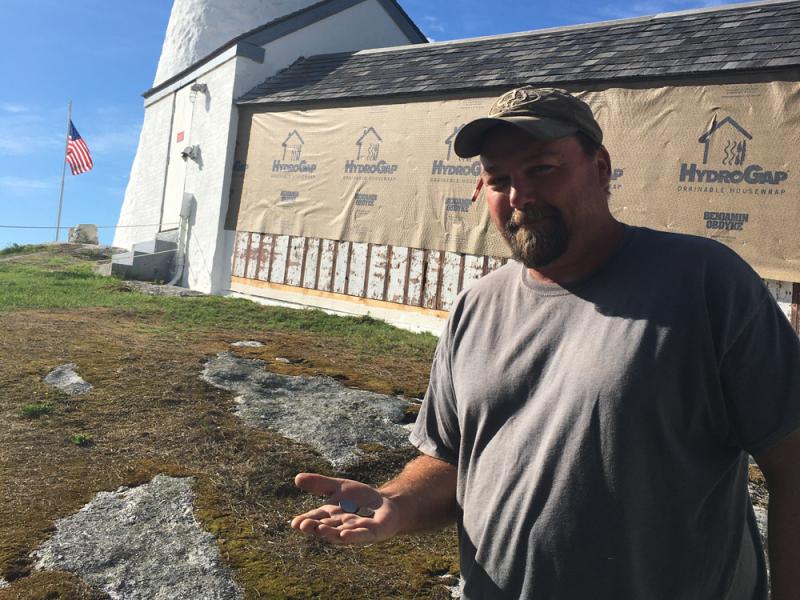 Carpenter Marc Holbrook with the coins – the 1868 two-cent coin and a 2020 quarter – which were placed in the siding of the structure. Elaine Jones photo
Carpenter Marc Holbrook with the coins – the 1868 two-cent coin and a 2020 quarter – which were placed in the siding of the structure. Elaine Jones photo
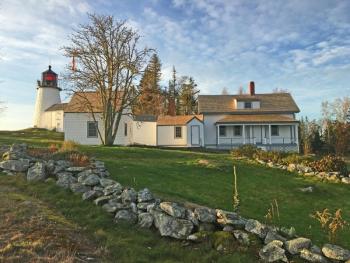 The restored Burnt Island Lighthouse and Keeper’s Dwelling. Elaine Jones photo
The restored Burnt Island Lighthouse and Keeper’s Dwelling. Elaine Jones photo
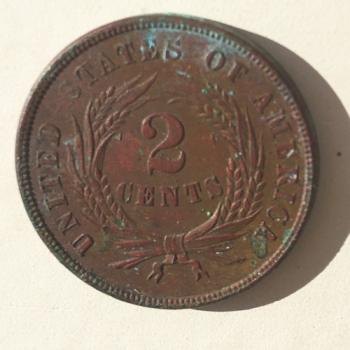 The 1868 two-cent coin that fell to the ground when lead carpenter Marc Holbrook removed the siding. Elaine Jones photo
The 1868 two-cent coin that fell to the ground when lead carpenter Marc Holbrook removed the siding. Elaine Jones photo
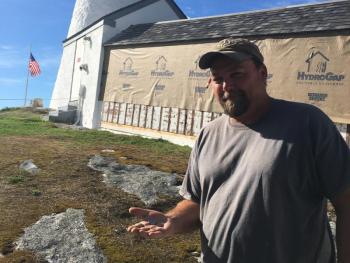 Carpenter Marc Holbrook with the coins – the 1868 two-cent coin and a 2020 quarter – which were placed in the siding of the structure. Elaine Jones photo
Carpenter Marc Holbrook with the coins – the 1868 two-cent coin and a 2020 quarter – which were placed in the siding of the structure. Elaine Jones photo
The goal to preserve the strength, beauty, and legacy of the Burnt Island Light Station has been met. Boothbay Harbor’s beloved lighthouse will shine on for at least another 200 years, thanks to the hundreds of generous donors. The restoration project was an enormous undertaking that saved a maritime treasure for the state of Maine and for future generations. As an educational and recreational facility, it will continue to positively impact the Boothbay region and those who venture ashore.
Thanks also goes out to the many employees across several agencies who came together to make this restoration happen. A collaborative effort involving the U.S. Coast Guard, four state bureaucracies, a local non-profit organization (KBIL) and three builders took time and patience, but all partners stayed focused on the same goal of saving this important piece of Maine’s history – without the use of taxpayers’ dollars.
The rubblestone tower had a complete makeover by the J.B. Leslie Co. of South Berwick. To restore the physical and structural integrity of the lighthouse, old mortar between the granite blocks was removed and replaced with natural cement before receiving an outer coating of stucco. The tower’s lantern-room now shines inside and out after rusted surfaces were prepped, primed, and painted, and its leaky, red, lantern panes replaced and re-caulked.
Like from an episode of “This Old House,” the crew of Marden Builders conquered many unforeseen problems along the way. They successfully restored the 1857 keeper’s dwelling and covered walkway by fusing old-time craftmanship with today’s materials and technology. However, as a restoration not a renovation project; the contractor had to retain the buildings’ historic design as recorded in 1950. A set of architectural drawings and photographs guided the carpenters, but their attention to detail, cooperation and outstanding level of workmanship has returned it to its glory.
A significant change in common to the lighthouse, dwelling, covered walkway and work-shed was the installation of custom-made, historically correct Marvin windows. Possibly at automation in 1988, the tower’s double-hung, four-over-four, windows were replaced with decorative, glass blocks. During the restoration, collaboration was required between the masons and carpenters for the traditional windows to be reinstalled because of the wood to concrete interface, exterior trim application, and filling of gaps between window trim and the tower’s stucco coating.
Mariners should recognize a change in the flagpole’s location as it returned to its historic place at the peak of the shed. The 15-foot, cedar pole was sanded, painted, and equipped with the necessary hardware before being topped off with a gold ball. Funded by Adele Muise Bailey in memory of her husband Lincoln, she loved raising and lowering the flag as a child when her dad Joseph Muise served as keeper from 1936-1951. She also shared that her dad used the flag to summon help after an injury by turning it upside down.
Many fascinating, historic details surfaced during the four-month project with some leaving more questions than answers. The covered walkway, connecting the dwelling to the lighthouse, was a treasure trove of “finds.” When clapboards were removed, written on the wall was: “Thick fog today. Howard Haggett, Arrowsic, ME, May 9, 1907.” That name was not of a former keeper, so a call to the Arrowsic Town Office uncovered that Mr. Haggett was a carpenter employed by the U.S. Lighthouse Service at that time.
Another historic find was a two-cent piece dated 1868 that fell to the ground when lead carpenter Marc Holbrook removed the siding. Was it placed there by a worker? If so, why was it 11 years younger than the age of the building? Or, maybe it fell out of a Keeper’s pocket and rolled between the inside/outside floor systems of the covered way? Whatever its origin, the mysterious coin was returned to the place it was found along with a 2020 quarter for additional good luck.
And how about the various bones, clam shells, and raptor’s talon found when the floor of the walkway was lifted to replace rotted floor joists? So how did they get there? Was it a local mink or some other varmint and how did it enter this space?
So, who said history was dull and boring? It certainly was fun and exciting for project manager Elaine Jones, as every time a new clue surfaced it was another piece of Burnt Island’s puzzle.
If you want to learn more about the restoration, her detailed report can be found posted on the Keepers of Burnt Island Light (KBIL) website: www.keepersofburntislandlight.com
Event Date
Address
United States

